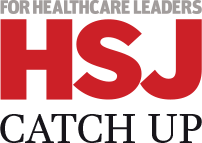Samantha Cox explores the learning points for the CQC from its latest quality review
Last month, the King’s Fund and Alliance Manchester Business School published a report analysing the effectiveness of the Care Quality Commission’s approach to inspecting and rating health and social care providers. The report is titled Impact of the Care Quality Commission on provider performance – Room for improvement?

While it noted that the current CQC inspection regime (first implemented in 2013) was a significant improvement on past methodologies, it also highlighted room for improvement in many areas. This includes the CQC’s intelligence monitoring activities and its relationship with providers which I discuss in more detail below.
Intelligent Monitoring
One of the more concerning findings of the report was that the Intelligent Monitoring datasets that the CQC previously used (up until July 2017) to risk assess provider performance and prioritise inspections had little or no correlation with the subsequent ratings, particularly in relation to general practice and acute trusts.
The findings have highlighted the limitations of risk based regulatory models, using routinely reported performance data, in targeting regulatory interventions.
In June 2017, the CQC introduced a new system for risk assessing all regulated services, called CQC Insight. There are now specific insight tools for the different health and social care sectors.
The report does not provide an analysis of the effectiveness of the new system, but it is hoped that its findings prompt the CQC to reflect further on its data gathering practices to ensure lessons are learnt for the new system.
One of the concerning findings of the report was that the Intelligent Monitoring datasets that the CQC previously used to risk assess provider performance had little or no correlation with the subsequent ratings
We noted a number of providers taking issue with the data contained in the CQC’s Intelligent Monitoring reports which relied on crude figures and did not provide any context to the data which ultimately placed a service into a category of risk.
Some providers attempted to challenge the CQC on this and minor amendments to the CQC’s intelligent monitoring processes were made over the past few years. However, the report demonstrates that such changes do not appear to have been significant enough to address the overarching weaknesses of the old system.
The CQC’s next phase of inspection is intended to be even more reliant on gathering insight through performance metrics and other intelligence sources.
It is paring back on routine inspections for all providers and reducing the frequency of inspection for those rated as good or outstanding, instead relying on the new system of CQC Insight. It is, therefore, of vital importance that the intelligence gathering systems the CQC uses are fit for purpose.
Relationship between the CQC and providers
At Ridouts, we have noticed that the relationship fostered between a provider and their local inspection team can have a huge impact on the potential outcome of an inspection.
Some providers have positive relationships with their local inspection team and as a result have experienced a more collaborative approach to inspections and the subsequent production of inspection reports.
However, at the other end of the scale, we have seen examples of inspectors having personal clashes with providers that has led to the over-inflation of negative inspection findings, including ratings.
In other instances, we have seen inspectors unwilling to positively engage with providers who have previously had negative inspection findings, based on a pre-determined opinion of a service before they have even visited it themselves.
While this may be the exception rather than the rule, there is a clear need for a consistent approach to the fostering of provider-inspector relationships.
We have noticed that the relationship fostered between a provider and their local inspection team can have a huge impact on the potential outcome of an inspection
The report reflects our observation and states that the relationship between CQC staff and health and social care professionals and managers fundamentally affected the way regulation worked and its impact and contributed to variation in providers’ experiences of inspection.
For example, it refers to interactions with CQC evoking feelings of fear and anxiety in both provider staff and managers which can sometimes contribute to the development of cultures of fear.
The report further states that this highlights the importance for the CQC of investing in recruitment and training of its staff, to create an inspection workforce with the credibility and skills necessary to foster improvement through close working relationships, while maintaining consistency and objectivity.
It also suggests providers can learn from the report’s findings, emphasising the need for providers to encourage staff to engage in open, improvement focused discussions with inspection teams.
Conclusion
The report suggests that in order for the CQC to yield the maximum positive impact from its available resources, it should develop and use regulatory interactions other than comprehensive inspection.
While the report shies away from specifics, it emphasises the importance of the regulatory relationship between providers and inspectors. It is hoped that the CQC can reflect on the report’s findings to further improve its current phase of inspection and shape the CQC’s future approach to the regulation of providers.





























2 Readers' comments